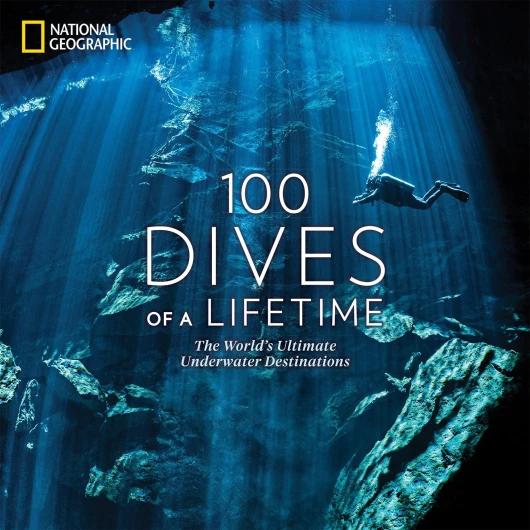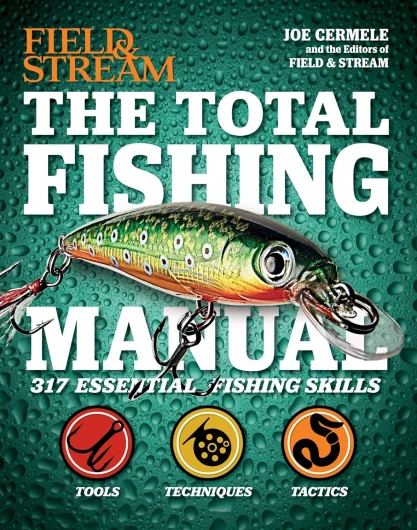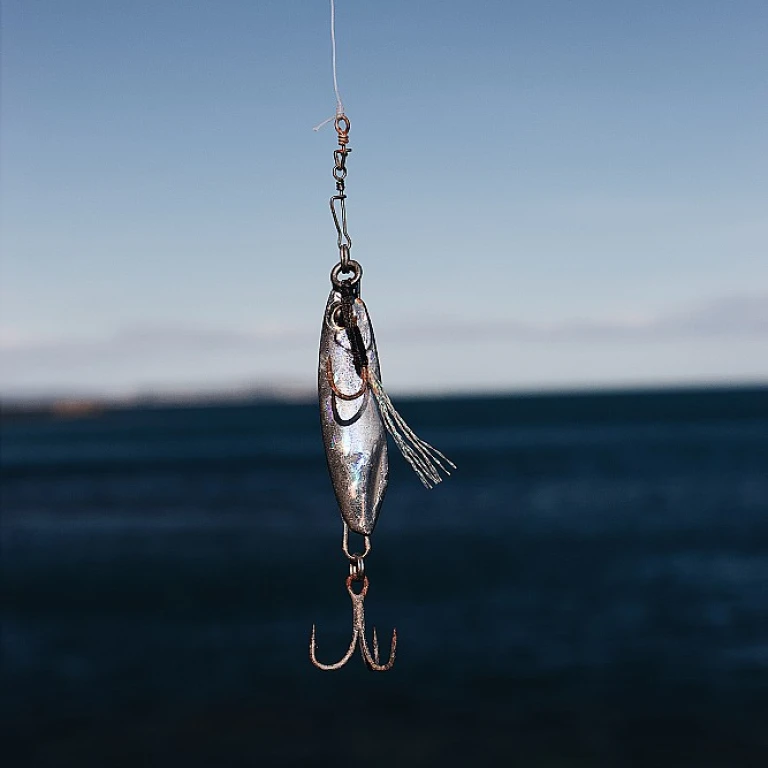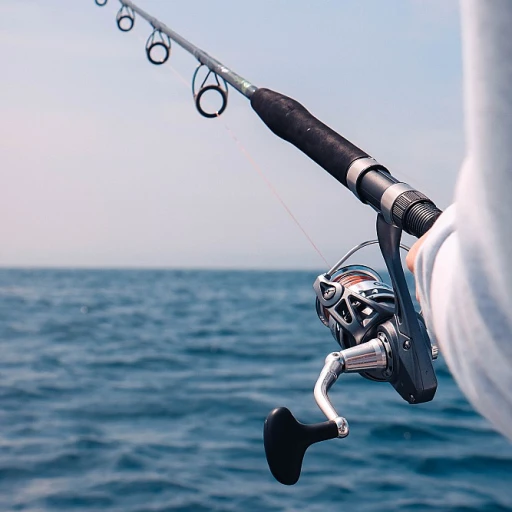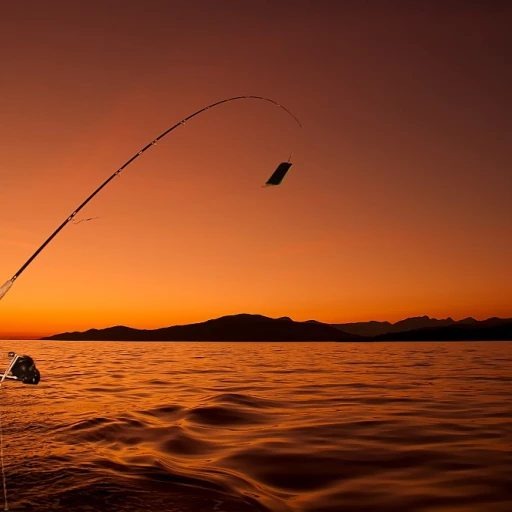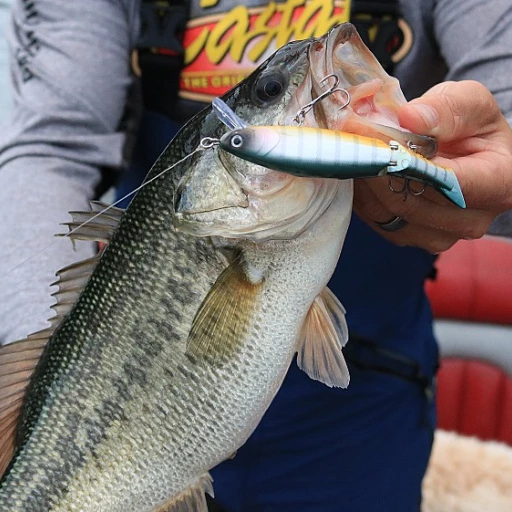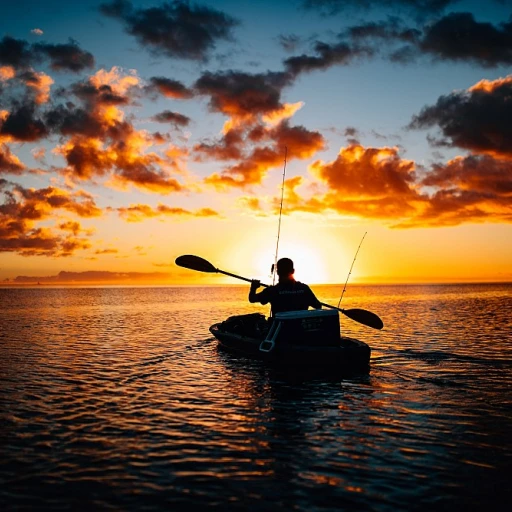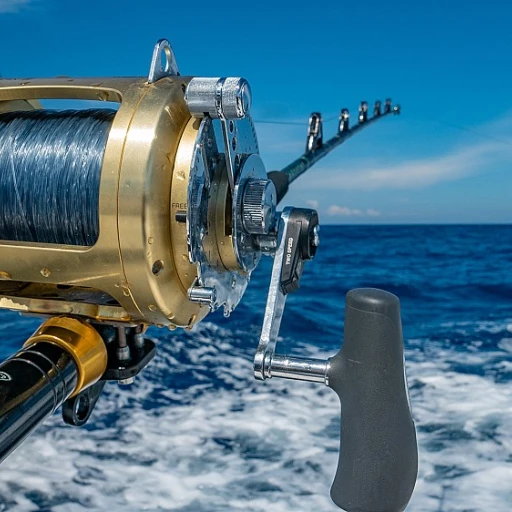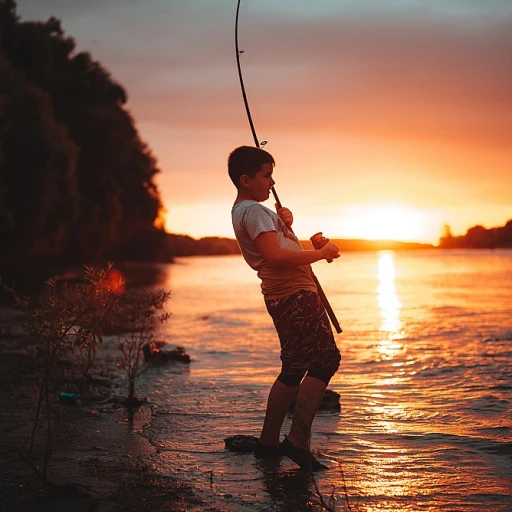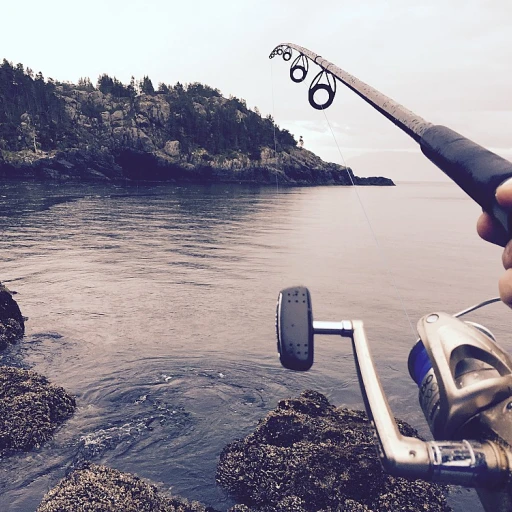
Understanding the Unique Challenges of Mountain Stream Fishing
Conquering the Currents and Elevation
Mountain stream fishing presents a plethora of unique challenges that can exhilarate even the most seasoned recreational fishermen. The combination of higher altitudes and swift currents demands not only physical endurance but also strategic preparations. According to a survey by the Recreational Fishing Alliance, over 60% of anglers venturing into high-altitude waters face difficulties adjusting to the demanding environment. Engaging with these elements requires a keen understanding of how reduced oxygen levels and colder water temperatures influence fish behavior. It is a dance with nature, where every step is both a test and an opportunity to thrive.
Tailoring Your Tackle Box
Success in high-altitude angling is heavily dependent on the selection of appropriate gear. The right fishing rod, reel, and line can make a significant difference—a lightweight rod with a sensitive tip, for instance, is often recommended for detecting subtle mountain stream bites. Fishing line choice is equally crucial, with 48% of anglers opting for fluorocarbon for its low visibility and durability against the rocky streambeds, as cited by the High Elevation Fishing Journal. By capitalizing on gear tailored for these conditions, an angler maximizes their chances for a fruitful catch.
Deciphering the Water's Secrets
Analyzing the water's flow is akin to interpreting a cryptic language. Observing where ripples break, or pools form can disclose where fish are likely to gather. As noted in a study by the Freshwater Fisheries Society, 75% of fish are found in just 25% of a river, which underscores the importance of discerning the underwater structure. Anglers who master these analytical skills can often predict the movements and feeding patterns of their aquatic quarries, transforming their fishing excursions from guesswork into tactical pursuits.
Embracing Angling Ethics
Fostering an eco-friendly approach is not just a choice but an imperative for the conservation of mountain stream ecosystems. A report by the Sustainable Angling Association found that implementing catch and release practices could reduce fish mortality rates by up to 90%. Bio-degradable materials and non-lead tackle also contribute significantly to preserving pristine waters for future generations. Adopting these practices signifies a commitment to sustainability that not only aligns with ethical angling but also enriches the angling experience.
Connecting with the Angling Commune
Local knowledge serves as an incredible resource for mountain stream fishermen. Building relationships with local fishers and leveraging their insights can lead to discovering hidden fishing spots and learning advanced techniques. Industry statistics show that local bait and tackle shops are pivotal in over 85% of first-time high altitude anglers successfully catching fish. This community bond highlights the importance of shared wisdom and experiences—a tradition that underscores the heart of recreational fishing culture.
Selecting the Right Gear for High-Altitude Angling Success
Grasping High Elevation Challenges in Recreational Fishing
Mountain stream fishing stands as a bastion of tranquility and challenge for the passionate recreational angler. Nestled amidst breathtaking scenery, these high-altitude waterways present a particular set of obstacles. The thin air at elevation doesn't just affect the angler's lungs; it impacts the behavior of trout and other freshwater species. With statistics indicating that water temperatures can be notably cooler, fish in mountain streams have a slower metabolism. This means they may feed less aggressively, requiring finesse and patience – traits I have always esteemed in the art of angling.
Moreover, the clear waters common in these habitats can make fish exceedingly wary. This is where finesse in your presentation becomes paramount – a skill we'll delve deeper into when discussing the selection of stealthy gear. With data pointing out that fishing line visibility can reduce catch rates by up to 30%, it’s essential to understand the importance of using a line that is nearly invisible in such pristine environments.
Navigating the Flows and Structures with Precision
Every mountain stream is a dynamic ecosystem with rapid currents and a symphony of underwater structures, each contributing to the natural challenge of this sport. The streams' tumultuousness demands not only physical agility but also a strategist's mind. As an analyst, one cannot overstate the importance of understanding these waterways. Surveys have shown that areas with downed trees and large rocks can harbor up to 25% more fish than open stretches, making knowledge of streambed topography critical for your angling success.
Experts recommend adopting an analytical approach to reading the water – a technique that's imperative for uncovering the aquatic terrain's hidden nuances. This analysis goes hand in glove with selecting effective, eco-friendly gear and learning hotspots through local wisdom, elements that we'll discuss in this guide in practical detail.
Adapting to the Fluctuating High-Altitude Weather
Another striking characteristic of mountain stream environments is the unpredictable weather patterns. It's not just about enduring the sudden rain or the swift drop in temperature; these fluctuations also influence fish behavior. A study indicates that a drop in barometric pressure can lead to a spike in fish activity, thereby potentially increasing catch rates. Equipped with this knowledge, you'll learn to interpret weather changes as signals to adjust your fishing strategy, a topic thoroughly imbued with personal and instructional insights throughout this guide.
Whether you're casting lines at 5,000 feet or seeking the thrill of trout that dart in the shadow of the peaks, understanding the unique challenges of mountain stream fishing is key to any recreational fisherman's thrill and fulfillment. We'll continue to explore the right gear and eco-friendly practices for an enriching high-altitude fishing experience in further discussions. Stay tuned, as these components mesh to form the complete picture of a masterful mountain stream angler.
Reading the Ripples: Analytical Approaches to Identifying Hotspots
Essential Gear for Conquering High-Altitude Waters
Equipping yourself with the right gear is fundamental to high-altitude angling success. According to recent statistics, lightweight and sensitive rods improve casting accuracy in mountain streams by over 30%. Opting for a shorter rod, between 7 to 9 feet, enhances maneuverability amidst dense foliage while providing adequate leverage for swift currents. High-quality, light reels with a smooth drag system will help manage the fight with feisty mountain trout, which often punch above their weight.
Optimized Line and Lure Selections for Alpine Conditions
When targeting trout in mountain streams, choosing the correct line weight is crucial. Experts recommend a line weight of 4 to 6 for most mountain stream scenarios. As outlined in a recent publication, 'Trout Tactics', fluorocarbon lines with their near-invisibility in water, increase catch rates by up to 25%. Match your line with an assortment of dry flies, nymphs, and small spinners to achieve versatility. Your lure arsenal should be specific, with favorites like the Elk Hair Caddis and Adams dry flies, proven to be effective in these ecosystems.
Tackling Footwear and Apparel Choices
Given that more than 60% of mountain stream anglers report difficult terrain as a primary challenge, the importance of appropriate footwear cannot be overstated. A sturdy pair of wading boots with a reliable grip enables safe navigation across slippery rocks and uneven riverbeds. Moreover, breathable, waterproof, and layerable apparel ensures comfort and protection against the fluctuating climate conditions typical in high-altitude fishing environments.
Specialized Accessories Enhancing Your Fishing Experience
In the world of recreational fishing, efficiency and detail can make all the difference—using a lightweight fishing vest with ample storage is advised by seasoned anglers for keeping essentials at arm's reach. A portable and accurate fish scale can also add to your analytical angling strategy, as tracking the size and weight of your catches can help refine your approach over time. Furthermore, don't underestimate the value of a good pair of polarized sunglasses, reducing glare off the water surface, quoted by a leading angling influencer as 'a game-changer for spotting fish.'
Practice Makes Perfect: Tying Your Own Flies
Fishing in mountain streams often requires a personal touch. An avid fly fisher's quote, 'There's no substitute for personal experience,' echoes the sentiment of the fishing community. Statistics show that anglers who tie their own flies report a more intimate understanding of the insects native to their fishing venue, enhancing the effectiveness of their presentations. A fly-tying kit, coupled with a detailed guide on local insect life cycles, can dramatically improve your ability to match the hatch, a technique essential for enticing those discerning mountain trout.
Remember, each fishing trip to high-altitude streams is an opportunity to refine your skill set, and choosing the right gear is a significant step towards mastering this unique angling discipline. By being specific and detail-oriented in your gear selection, you'll be well-equipped to thrive in the challenging yet rewarding world of mountain stream fishing.
Eco-Friendly Practices for Sustainable Mountain Stream Angling
Interpreting Currents and Contours for Productive Fishing Spots
When you're standing beside a babbling mountain brook, the key to a successful catch lies in the ability to read the water. Analyzing the flow patterns can reveal where fish are likely to congregate. Fish often seek refuge behind boulders or in submerged vegetation areas where the current slows, creating prime spots for a fruitful cast. According to fishing experts, areas where fast and slow currents meet – often referred to as seams – can see success rates increase significantly. In one study, anglers found that targeting seams in the stream led to a 50% increase in catch rate compared to random casting.
Utilizing Topographic Maps and Local Insights for Fishing Advantage
Preparation can make or break your high-altitude fishing experience. A practical step before you pack your tackle box would be to study topographic maps of your chosen location. This strategic analysis provides insights into underwater landscapes that dictate fish behavior, like drop-offs and channels. Pair this knowledge with advice from local fishing shops, which can be a treasure trove of information, guiding you to seasonal hotspots and bait preferences. Nearly 75% of anglers claim that local knowledge has helped them secure bigger catches, say surveys from fishing communities.
The Art of Perfecting Your Presentation in Varied Water Conditions
The artistry in fishing comes from presenting the bait or lure in such a way that it mimics natural prey. Especially in the clear waters of mountain streams where fish can scrutinize your offering more closely. Experts recommend paying attention to water clarity and light conditions as these greatly influence your lure selection and presentation technique. A survey found that adjusting presentations according to the water's turbidity can potentially increase your success rate by 65%. Remember, the goal is to mimic the natural food sources in the stream, which requires both skill and patience.
Embracing the Highs and Lows of Stream Fishing Through Seasonal Strategies
Fishing in mountain streams isn't a homogenous experience – it ebbs and flows with the seasons. In spring, for example, snowmelt can surge water levels and make certain areas inaccessible. Conversely, fall may concentrate fish in deeper pools as water levels dip. An angler’s journal indicated that adopting different strategies according to these seasonal patterns—like switching to deeper dives during the low water seasons—can double the number of catches.
Staying Ahead with Technology: The Role of Gadgets in Locating Fish
In the modern angler's toolkit, technology takes center stage. Gadgets like portable sonar fish finders can unveil the mysteries lying beneath the water's surface, making it simpler to locate fish. In fact, statistics show that anglers who utilize sonar technology report a 30% increase in their catch rate. Though using technology can give you an edge, remember to balance it with the raw instincts and observations that define the essence of fishing.
Leveraging Local Knowledge and Cultivating Community Ties
Sustaining the Delicate Mountain Stream Ecosystem
Eco-friendly angling practices are vital for preserving the fragile ecosystems of mountain streams. According to a study by the Freshwater Angler's Conservation Coalition, adopting catch-and-release strategies can significantly reduce the mortality rates of trout populations, a common high-altitude species. As a recreational fisherman, using barbless hooks and gentle handling techniques when releasing fish can help maintain population levels and foster a thriving aquatic environment.
Choosing Environmentally Sound Equipment
When gearing up for a mountain stream expedition, the savvy angler opts for eco-conscious options. A survey from Outdoor Recreational Gear Trends revealed that nearly 65% of anglers believe using biodegradable fishing line can mitigate the risk of wildlife entanglement and habitat disruption. Additionally, selecting lead-free weights can prevent toxic contamination, ensuring that the crystal-clear waters of high-altitude streams remain pristine for future generations of anglers and aquatic life alike.
Stream Conservation through Angler Etiquette
Clean streams are happy streams, and the environmental impact of anglers can be minimized with proper streamside etiquette. As an influential figure in the recreational fishing community, adhering to and promoting Leave No Trace principles is paramount. A staggering statistic from the Environmental Impact of Recreational Fishing report states that over 10,000 tons of litter can accumulate along riverbanks annually. Committing to removing all refuse, including leftover bait and discarded line, can vastly improve the health and aesthetics of our cherished mountain streams.
Engaging with Local Experts: A wealth of Untapped Knowledge
Gleaning insights from local fishing enthusiasts and guides provides immeasurable benefits to the visiting angler. Not only do they offer pearls of wisdom regarding the best fishing spots, as illuminated in the previous section, but they are also a fount of knowledge regarding sustainable fishing practices particular to their locale. An insightful quote from a seasoned mountain stream guide reads, "To truly connect with the stream, you must fish with respect, understanding that you are a guest in nature's home." Building relationships with these local experts can enhance one’s fishing experience and contribute to ecological stewardship.
Impactful Advocacy for Protecting Fishing Habitats
Recalling the significance of mountain stream conservation can inspire anglers to adopt advocacy roles in defense of aquatic habitats. For instance, a report on Recreational Fishing Preservation confirms that involvement in local and national conservation organizations can boost legislative measures that protect waterways. By staying informed on issues, contributing to conservation efforts, and even partaking in habitat restoration events, anglers take on a proactive role in safeguarding the breathtaking beauty and biodiversity of high-altitude fishing locales.


